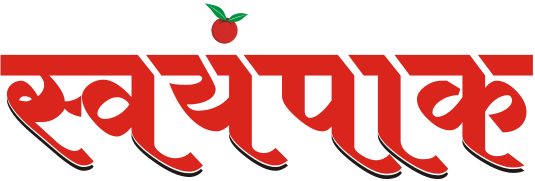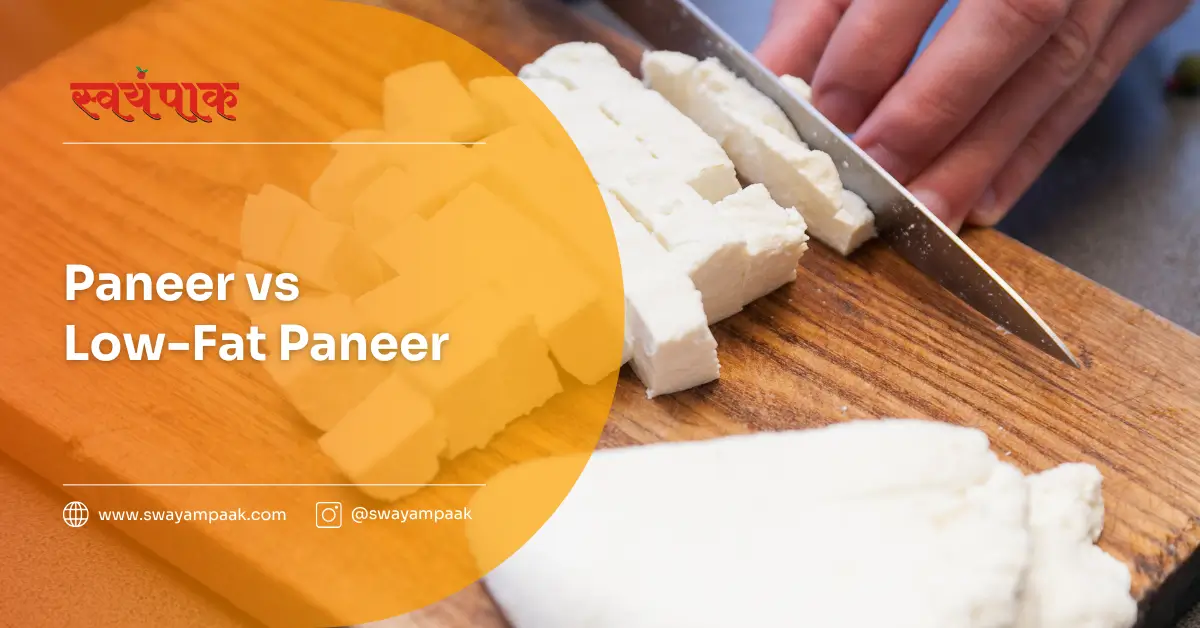Paneer vs Low-Fat Paneer? What to choose? If you’re on the journey to better health, paneer is likely already a beloved staple in your kitchen. But with the rise of low-fat dairy options, more Indians are asking: Should I stick with classic paneer or switch to low-fat paneer?
With India’s paneer market set to triple in size by 2033, driven largely by growing urban health consciousness and the vegetarian boom, it’s crucial to understand what you’re really getting when you choose between regular paneer and its low-fat alternative.
This expert-backed guide breaks down the differences, busts the myths, and spotlights the exact stats that matter for your health and waistline.
- Paneer vs Low-Fat Paneer
- What Is Paneer?
- Traditional Use in Indian Cuisine
- What Is Low-Fat Paneer?
- Growing Popularity in Indian Diets
- Key Nutrition Facts: Paneer vs Low-Fat Paneer
- Paneer Nutrition Comparison
- Health Benefits of Paneer vs Low-Fat Paneer
- Eating Habits in India: Paneer’s Popularity and Consumption
- How to Choose and Use Paneer vs Low-Fat Paneer?
Paneer vs Low-Fat Paneer
Paneer is a beloved staple in Indian kitchens, known for its creamy texture, rich taste, and high protein and calcium content. Traditionally made from whole milk, it features prominently in popular dishes like palak paneer, paneer butter masala, and paneer tikka.
In recent years, low-fat paneer has emerged as a healthier alternative, made from skimmed or low-fat milk.
It retains the protein benefits of regular paneer but with significantly less fat and fewer calories, making it a preferred choice for health-conscious Indians, fitness enthusiasts, and those managing weight or heart health.
Both regular and low-fat paneer are widely available across India, in local markets, supermarkets, and online, with low-fat paneer gaining increasing accessibility in urban centres.
Whether you enjoy the classic richness of traditional paneer or the lighter profile of low-fat paneer, both offer versatile, nutritious options to enrich Indian meals. So, let’s understand the Paneer ve Low-Fat Paneer comparison and their usage.
What Is Paneer?
Paneer is a fresh, non-aged cheese widely used in Indian cuisine. It is made by curdling hot milk with a food acid such as lemon juice, vinegar, or citric acid. Paneer is soft, white, and non-melting, making it ideal for rich gravies, tikkas, and a variety of traditional curries.
It holds a special place in Indian vegetarian diets, featuring in celebrated dishes like palak paneer, paneer butter masala, and shahi paneer. Traditionally, paneer is made from whole milk, which gives it a creamy texture and high fat content.
Traditional Use in Indian Cuisine
- Paneer has been a staple in Indian households for centuries, especially in North India.
- It’s highly valued in vegetarian cooking as a primary protein source, and is commonly served at celebrations, festivals, and daily meals.
- It absorbs flavours well, and its mild taste allows it to pair with bold spices, making it a versatile ingredient for both savoury and sweet recipes.
What Is Low-Fat Paneer?
Low-fat paneer is a modern version of classic paneer, gaining popularity among health-conscious Indians. It is produced using skim or low-fat milk instead of whole milk.
The method of preparation is the same: milk is curdled, but the lower fat content results in a firmer, slightly less rich cheese.
Low-fat paneer offers a protein-rich option with significantly less fat and fewer calories than regular paneer, making it appealing for people managing weight, cholesterol, or heart conditions.
Growing Popularity in Indian Diets
Paneer consumption in India is booming, with the market projected to more than triple between 2024 and 2033, driven by urbanisation, vegetarianism, and rising demand for protein-rich foods.
Low-fat paneer, in particular, is rapidly gaining ground among fitness enthusiasts, dieters, and anyone seeking the taste and versatility of paneer without the high calorie load.
It is now widely available in supermarkets, and many urban households have started making their own low-fat paneer at home for greater control over nutrition and quality.
Key Nutrition Facts: Paneer vs Low-Fat Paneer
When comparing your options for a nutritious, protein-rich addition to Indian meals, “Paneer vs Low-Fat Paneer” is an important topic, especially for those focused on balanced diets and wellness.
While both varieties are packed with protein and essential nutrients, their calorie, fat, and cholesterol profiles differ significantly.
Understanding these key nutrition facts empowers you to choose the right paneer based on your health goals, whether it’s weight management, heart health, or muscle building.
Paneer Nutrition Comparison
Regular Paneer
Traditional ChoiceLow-Fat Paneer
Diet-Friendly Option| Nutrient | Regular Paneer | Low-Fat Paneer |
|---|---|---|
| Calories | 265–323kcal | 150–200kcal |
| Protein | 18–21g | 18–21g |
| Total Fat | 20–27g | 5–10g |
| Sat. Fat | 12–18g | 4–6g |
| Carbs | 3–5g | 0.5–1g |
| Calcium | 480–714mg | 160–200mg |
| Cholest. | 40–60mg | 15–25mg |
| Sugar | 3–4g | 0g |
| Sodium | 5–30mg | 10–30mg |
Tip: Regular paneer has richer texture while low-fat paneer is better for weight management diets.
Highlights:
- Calories and Fat: Low-fat paneer has up to 50% fewer calories and significantly less total and saturated fat than regular paneer.
- Protein: Both varieties deliver high protein (excellent for vegetarians).
- Calcium: Regular paneer has more calcium, but low-fat paneer still offers a meaningful amount.
- Carbohydrates & Sugar: Both are low in carbs and sugar.
- Cholesterol and Sodium: Both are moderate to low, but low-fat paneer offers a slight advantage.
Why These Numbers Matter?
Low-fat paneer keeps the protein but slashes the calories and fat, ideal for weight management, heart health, and everyday use in Indian diets.
This table and comparison support informed choices, helping health-focused Indians enjoy their favourite dishes more wisely.
All values are per 100g and can vary by brand and preparation method.
Health Benefits of Paneer vs Low-Fat Paneer
Satiety and Muscle Support from Protein
- Both regular and low-fat paneer are excellent sources of high-quality protein, providing about 18–21g per 100g serving.
- Protein is essential for muscle repair, growth, and maintenance, particularly important for vegetarians and fitness enthusiasts.
- The rich protein content also promotes satiety, helping to curb hunger and reduce overall calorie intake, which supports healthy weight management.
Benefits for Bone Health (Rich Calcium Content)
- Paneer is rich in calcium, a vital mineral for strong bones and teeth.
- Regular paneer typically contains higher calcium levels (up to 714mg per 100g) compared to low-fat paneer.
- Both contribute meaningfully to daily calcium needs, supporting bone density and reducing the risk of osteoporosis, especially important in the Indian population prone to calcium deficiencies.
Weight Loss and Maintenance: Why Low-Fat Paneer Is Often Best
- Low-fat paneer stands out for those aiming to lose weight or maintain a healthy weight due to its significantly reduced calorie (150–200 vs. 265–323 calories per 100g) and fat content (total fat 5–10g vs. 20–27g in regular paneer).
- By retaining similar protein levels but cutting down on fats and calories, low-fat paneer helps reduce overall energy intake while preserving muscle mass, making it ideal for calorie-restricted diets.
Diabetes- and Heart-Friendly Aspects (Lower Fat Means Less Cholesterol and Saturated Fat)
- Low-fat paneer contains less saturated fat (4–6g vs. 12–18g) and cholesterol (15–25mg vs. 40–60mg) than regular paneer, which is beneficial for heart health and managing blood cholesterol levels.
- These qualities also make low-fat paneer a preferable choice for those with diabetes or cardiovascular concerns, as less saturated fat can help reduce the risk of insulin resistance and heart disease.
Dietitians recommend paneer, especially low-fat varieties, as a versatile, nutrient-dense food that supports muscle health, bone strength, weight management, and cardiovascular health, fitting well into the health-conscious Indian diet.
Eating Habits in India: Paneer’s Popularity and Consumption
Paneer has become a starring ingredient in Indian diets, propelled by the country’s large vegetarian population and increasing health awareness.
The Indian paneer market is valued at approximately INR 648.05 billion in 2024 and is projected to grow more than threefold to around INR 2,030.73 billion by 2033.
This rapid growth reflects the rising demand for dairy proteins as Indians seek healthier, protein-rich food sources amid a nutrition transition.
Demand for Low-Fat and High-Protein Foods
Urbanisation, busy lifestyles, and increased focus on wellness have fueled the surge in consumption of low-fat, high-protein foods.
Low-fat paneer particularly appeals to fitness enthusiasts, working professionals, and individuals managing weight or health conditions like diabetes and heart disease.
Ready availability in supermarkets and homemade preparations make it a convenient and nutritious choice.
The shift also aligns with a broader pattern where higher disposable incomes encourage mindful eating and experimentation with healthier food variants.
Common Indian Paneer Dishes and Caloric Pitfalls
Paneer is integral to countless Indian dishes such as palak paneer, paneer butter masala, shahi paneer, paneer tikka, and paneer bhurji.
While paneer itself is nutritious, many traditional recipes incorporate calorie-dense ingredients like cream, butter, ghee, and heavy gravies, driving up the overall calorie and fat content.
For health-conscious consumers, the key is moderation and preparation methods that limit added fats and sugars.
For instance:
- Paneer Butter Masala is rich in flavour but often contains high amounts of ghee and cream, increasing calories substantially.
- Paneer Tikka, grilled without excessive oil, is a better low-calorie option rich in protein.
- Palak Paneer made with minimal cream and oil offers a balanced meal with added vitamins and minerals from spinach.
How to Choose and Use Paneer vs Low-Fat Paneer?
Taste and Texture Preferences
- Regular paneer: Creamier, richer flavour, and softer texture due to the higher fat content. It holds up well in curries and gravies, giving dishes a luxurious mouthfeel.
- Low-fat paneer: Firmer and slightly less creamy, but still soft enough for most Indian dishes. It absorbs flavours well and works best in dry sautés, grilled dishes, or salads. If you prefer lighter textures that don’t feel oily, low-fat paneer is ideal.
Tips for Homemade Low-Fat Paneer
- Use skimmed or low-fat milk for curdling, boil, then add lemon juice or vinegar to separate curds.
- Strain using a muslin cloth and press gently to set. Less pressure keeps it softer.
- To retain moisture and softness, immerse the set paneer in cold water for 30–60 minutes after setting.
- Homemade low-fat paneer is free from preservatives and lets you control salt and additives, making it healthier and fresher.
Best Recipes for Weight Loss and Fitness
- Paneer Tikka: Marinate cubes in hung curd and spices, then grill or bake. Minimal oil, high protein, and low calories.
- Stir-Fried Paneer and Vegetables: Use low-fat paneer with mixed veggies, garlic, and minimal olive oil for a quick, filling meal.
- Palak (Spinach) Paneer (Low-Fat): Sauté spinach and spices with low-fat paneer. Skip cream or ghee to keep calories down.
- Paneer Bhurji (Scrambled Paneer): Use onions, tomatoes, chillies and low-fat paneer for a spicy, light breakfast.
- Salads and Wraps: Add grilled low-fat paneer to salads or whole wheat wraps for portable, calorie-smart snacks.
What to Avoid: Calorie-Heavy Gravies & Excessive Oils
- Limit use of butter, ghee, cream, cashew paste, and full-fat yoghurt.
- Restaurant-style paneer dishes (like butter masala, shahi paneer) often contain large amounts of fat and hidden calories.
- Deep-fried paneer snacks significantly raise calorie load; grilling or baking is better.


